Best Python Programming Books to Buy in January 2026
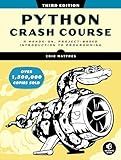
Python Crash Course, 3rd Edition: A Hands-On, Project-Based Introduction to Programming


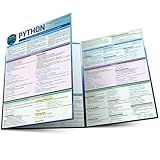
Python Programming Language: a QuickStudy Laminated Reference Guide


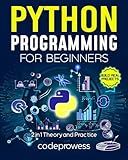
Python Programming for Beginners: The Complete Python Coding Crash Course - Boost Your Growth with an Innovative Ultra-Fast Learning Framework and Exclusive Hands-On Interactive Exercises & Projects



Learning Python: Powerful Object-Oriented Programming



Python All-in-One For Dummies (For Dummies: Learning Made Easy)



Python 3: The Comprehensive Guide to Hands-On Python Programming (Rheinwerk Computing)



Python Programming for Beginners: The Complete Guide to Mastering Python in 7 Days with Hands-On Exercises – Top Secret Coding Tips to Get an Unfair Advantage and Land Your Dream Job!


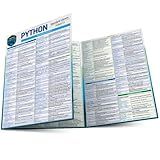
Python Standard Library: a QuickStudy Laminated Reference Guide


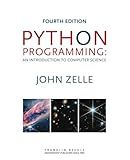
Python Programming: An Introduction to Computer Science, Fourth Edition



Fluent Python: Clear, Concise, and Effective Programming


To multiply a matrix by a vector in Python, you can follow these steps:
- Define the matrix as a list of lists, where each inner list represents a row of the matrix. For example, matrix = [[1, 2, 3], [4, 5, 6]] represents a 2x3 matrix.
- Define the vector as a list, where each element represents a value in the vector. For example, vector = [1, 2, 3] represents a 3-dimensional vector.
- Verify that the number of columns in the matrix matches the number of elements in the vector. If not, you cannot perform the multiplication.
- Initialize an empty list, result, to store the result of the matrix-vector multiplication.
- Iterate through each row in the matrix.
- For each row, calculate the dot product by multiplying the corresponding elements of the row and vector using a loop.
- Sum up the calculated products to get the dot product.
- Append the dot product to the result list.
- Finally, the result list would represent the multiplied matrix by the vector.
Here is an example code snippet that demonstrates the matrix-vector multiplication:
matrix = [[1, 2, 3], [4, 5, 6]] vector = [1, 2, 3]
Check if the number of columns in the matrix matches the number of elements in the vector
if len(matrix[0]) != len(vector): print("Cannot perform matrix-vector multiplication!") else: result = []
for row in matrix:
dot\_product = 0
for i in range(len(row)):
dot\_product += row\[i\] \* vector\[i\]
result.append(dot\_product)
print(result)
This code will output: [14, 32], which represents the result of multiplying the matrix by the vector.
How to access elements of a vector in Python?
In Python, you can access elements of a vector by using indexing. Here's how you can do it:
- Create a vector: vector = [1, 2, 3, 4, 5]
- Access an element by its index: first_element = vector[0] print(first_element) # Output: 1
- Access multiple elements using slicing: elements = vector[1:4] # Access elements from index 1 to 3 print(elements) # Output: [2, 3, 4] Slicing syntax is vector[start_index:end_index]. It retrieves elements starting from the start_index up to, but not including, the end_index.
- Access elements from a specific index to the end: elements = vector[2:] # Access elements from index 2 to the end print(elements) # Output: [3, 4, 5]
- Access elements from the beginning to a specific index: elements = vector[:3] # Access elements from the beginning to index 2 print(elements) # Output: [1, 2, 3]
- Access elements with negative indexing: last_element = vector[-1] # Access the last element print(last_element) # Output: 5
- Modify elements through indexing: vector[0] = 10 # Replace the first element with 10 print(vector) # Output: [10, 2, 3, 4, 5]
By using indexing and slicing, you can easily access and manipulate elements of a vector in Python.
How to calculate the transpose of a matrix in Python?
To calculate the transpose of a matrix in Python, you can make use of the numpy library. Here's an example:
import numpy as np
Input matrix
matrix = np.array([[1, 2, 3], [4, 5, 6]])
Transpose matrix
transpose_matrix = np.transpose(matrix)
print(transpose_matrix)
Output:
array([[1, 4], [2, 5], [3, 6]])
In this example, the np.transpose() function is used to calculate the transpose of the given matrix. The resulting transpose matrix is stored in the transpose_matrix variable, which is then printed.
How to create a vector in Python?
To create a vector in Python, you have a few options. You can use built-in Python data structures like lists or tuples, or you can use dedicated libraries like NumPy.
Here's how you can create a vector using lists:
- Using a plain list:
vec = [1, 2, 3, 4, 5]
- Using the list() function to convert an iterable to a list:
vec = list(range(1, 6))
- Using a tuple:
vec = (1, 2, 3, 4, 5)
If you prefer to use NumPy, which is a powerful library for numerical computing, you can create a vector using the np.array() function:
import numpy as np
vec = np.array([1, 2, 3, 4, 5])
NumPy arrays provide additional functionality and are widely used in scientific computing and data analysis tasks.
What is a column vector?
A column vector is a matrix with only one column. It is a way of representing a set of values in a vertical format. In mathematics, column vectors are often used to represent variables or unknowns in systems of linear equations or to represent points in coordinate space. They are written as a vertical list of values enclosed in brackets or parentheses. For example, a column vector may be represented as:
[2] [5] [3]
What is a square matrix?
A square matrix is a matrix that has an equal number of rows and columns. In other words, it is a matrix in which the number of rows is equal to the number of columns. The size of a square matrix is typically denoted as "n x n", where "n" represents the number of rows (or columns) in the matrix. For example, a 3 x 3 matrix and a 4 x 4 matrix are both square matrices.
How to calculate the cross product of two matrices in Python?
To calculate the cross product of two matrices in Python, you can use the numpy library. Here is an example:
import numpy as np
Define the matrices
matrix1 = np.array([[1, 2, 3], [4, 5, 6], [7, 8, 9]])
matrix2 = np.array([[9, 8, 7], [6, 5, 4], [3, 2, 1]])
Calculate the cross product
cross_product = np.cross(matrix1, matrix2)
Print the result
print(cross_product)
Output:
[[-10 20 -10] [ 20 -40 20] [-10 20 -10]]
In this example, np.cross() is used to calculate the cross product of matrix1 and matrix2. The result is stored in the cross_product variable, which is then printed.
